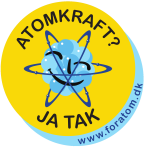Background
The Chernobyl disaster is widely regarded as one of the worst nuclear accidents in history. The reactor responsible for the catastrophe was an RBMK-1000, a Reaktor Bolshoy Moshchnosti Kanalnyy type 1000 Generation II reactor designed and constructed exclusively in the Soviet Union [1].
One of the most significant differences between the RBMK-1000 reactor and other reactors worldwide is the presence of two serious design flaws. These flaws were well-known to Western experts, who had warned against the Soviet Union’s decision to build the reactor in this way.
Despite these warnings, the Soviet Union went ahead with constructing the RBMK-1000 reactor, ultimately leading to the Chernobyl disaster. The consequences of this accident were devastating, with long-lasting effects on the environment and human health.

Lack of containment building
The containment building is a reinforced concrete shell over 2 meters thick. So strong that a jet can smash into it without damage [2]. Its purpose is that if all other safety systems fail, it may stop radioactive fallout. [Read more about the Containment Building here].
The Chernobyl plant was built without the meter-thick reinforced concrete jacket that encloses the core. No other nuclear power plant in the world has been built without it. The size of the RBMK-1000 reactor made the containment building too large and expensive. So it was saved away and put in a common hall.
If the Russian RBMK-1000 reactor had been designed with such a containment building, the 1986 accident at Chernobyl would have only destroyed the reactor but not caused a harmful environmental release, as we saw.
All other nuclear power plants worldwide are designed with such a containment building [3].
Combined graphite moderation with water cooling
The moderator’s task is to slow down the speed of the neutrons. The chance of fission only occurs if these move slowly [4].
The light water reactors (LWR) and all other reactors are water-moderated and water-cooled. This means that the system is interrupted, and the water cooling is lost; the reaction stops because there is no moderator. That is, the reactor is self-stabilizing. If they lose cooling, the fission process stops. They cannot burn.
The RBMK-1000 reactor used at Chernobyl combined graphite moderation with water cooling. If that cooling is lost, the fission process does not stop. On the other hand, because the graphite is still there, it gets hotter and hotter, and the griffin eventually catches fire.
The Chernobyl accident cannot be repeated.
Because of these significant design differences, most of the world’s operating reactors have and are never at risk of this type of accident, as we saw at Chernobyl.
Today there are still 8 RBMK reactors left in Russia. But they are no longer built and are being closed down gradually. After the Chernobyl accident in 1986, they were all upgraded to prevent the release sequence. So there is no risk of a new Chernobyl with them.
Sources
- https://www.world-nuclear.org/information-library/nuclear-fuel-cycle/nuclear-power-reactors/appendices/rbmk-reactors.aspx
- https://www.youtube.com/watch?v=P5IymYOeiSc
- https://energyeducation.ca/encyclopedia/Reactor_building
- https://whatisnuclear.com/moderation.html




